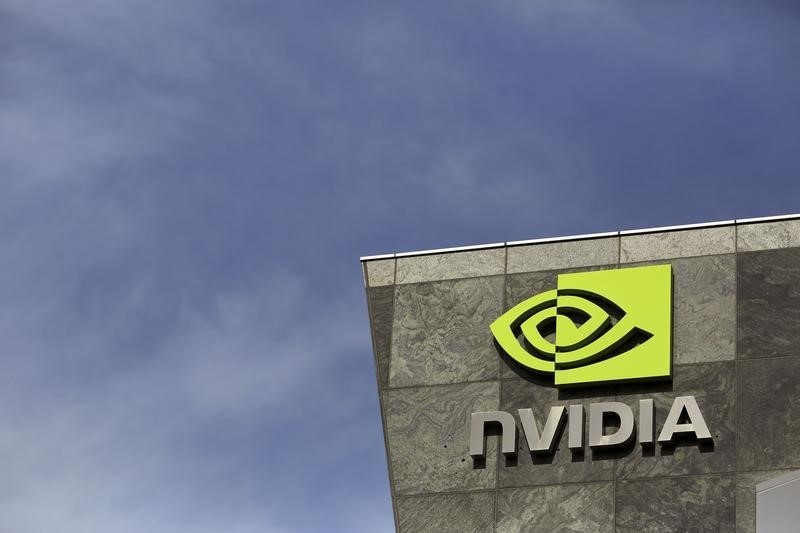
© Reuters.
NVDA
-2.86%
Add to/Remove from Watchlist
Add to Watchlist
Add Position
Position added successfully to:
Please name your holdings portfolio
Type:
BUY
SELL
Date:
Amount:
Price
Point Value:
Leverage:
1:1
1:10
1:25
1:50
1:100
1:200
1:400
1:500
1:1000
Commission:
Create New Watchlist
Create
Create a new holdings portfolio
Add
Create
+ Add another position
Close
Only five years ago, Nvidia’s market valuation was sitting around the $100 billion mark. Fast forward to 2024, the chipmaker is the world’s third most valuable company, with a market cap of a staggering $2.3 trillion. Moreover, Nvidia (NASDAQ:NVDA) stock price seems to be on its way towards $1,000.
This represents a twentyfold surge for the Nvidia stock and can largely be attributed to a single factor — the explosion of generative artificial intelligence (AI) technology.
However, this breakneck growth in NVDA and the AI field has prompted investors and analysts to speculate if this represents another market bubble and question the sustainability of high valuations for the chipmaker and other tech behemoths.
Nvidia stock surge
While many know it as the maker of graphic processing units (GPUs) used for video gaming and rendering, Nvidia’s products are actually playing an integral part to nearly all of today’s sophisticated technology.
For instance, the company’s chips power the self-driving functionality in Tesla’s EVs, and are also a fundamental component of the cloud computing services used by nearly all major tech corporations.
These services are crucial to numerous aspects of our daily online activities, from streaming entertainment on platforms like Netflix (NASDAQ:NFLX) to utilizing various office and productivity applications.
But Nvidia’s breakneck growth over the past year has been driven by its role in the AI universe.
The tech giant witnessed unprecedented demand for its highly sophisticated chips as the likes of ChatGPT and other generative AI products began to emerge.
This is mainly due to the high computational demands of GenAI platforms, which rely on powerful GPUs for their operations. Nvidia, controlling the GPU market with an estimated 80% share as per analysts, became a key player in this growth phase.
This heightened demand for Nvidia’s GPUs led to a significant sales boom, a fact underscored by its latest financial results. Consequently, Nvidia’s stock price followed suit, staging an impressive 255% surge over the previous year.
Are AI chip stocks in a bubble?
Nvidia is hardly the only beneficiary of the ongoing AI boom. Rather, due to such a rapid pace of its growth, this burgeoning technology is the single biggest driver behind the stock market’s extraordinary growth and its ascent to numerous consecutive all-time highs.
As a result, investors and analysts began raising questions about whether this AI-led growth is another market bubble, and how long can Nvidia stock and other key players sustain these valuations.
Commenting on this matter, Citi strategists believe “this is one of the rare times it’s different,” adding that 2024 “is shaping up to be a repeat of 1999.”
Answering the question of whether AI is a bubble, Citi analyst Christopher Danely said, “Yes…but it could last into 2025.”
“We would note that these bubbles can last a year or longer, similar to what happened in 1999 with the tech bubble,” he added.
“This has happened before in 1999 and while it ended badly (and this will likely end badly as well), valuations can remain frothy for over a year, as long as estimates keep going up rapidly.”
Danely highlighted that valuations did not fall apart before late 2000.
Michael Hartnett, Bank of America’s chief investment strategist, also said the fervent enthusiasm for AI and cryptocurrencies bears the hallmarks of a bubble.
“We are seeing euphoria at the moment because of the Fed, the Fed wants to cut rates come what may and the markets are front running that in gold, in crypto, in equities and even in bonds,” Hartnett told Bloomberg in an interview.
The persistence of higher-than-anticipated inflation and slightly subdued growth, coupled with the resilience of risk assets, “is very symptomatic of a bubble mentality,” Hartnett noted.
He highlighted that the indicators of a bubble can be identified through aspects such as price movements, the speed of these movements, valuations, and the market breadth.
Source: Investing.com


























